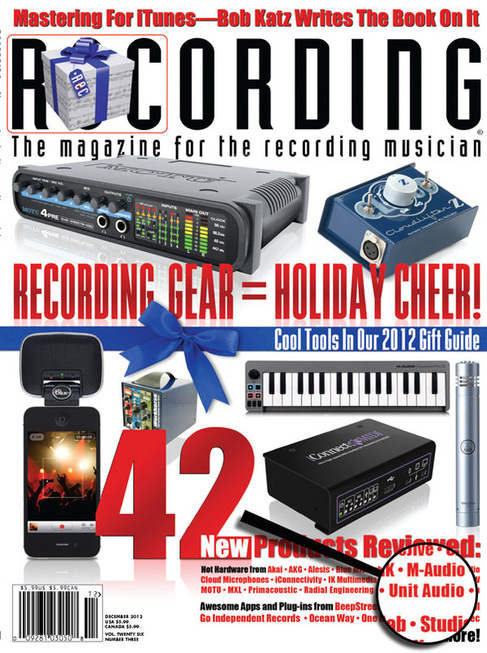Unit Audio Micro-Unit Summing Box

Recording Magazine
December 2012
Analog summing devices have become quite popular in recent years. They are designed to return analog smoothness and depth to otherwise sterile sounding digitally summed DAW mixes. Typically boutique specialty items, they tend to come with price tags that run from $700 to multiple thousands of dollars. Aiming to challenge that is Unit Audio, currently offering four different passive summing models at prices that range from the $399 16-channel Unit down to the simple $149 8-channel Milli-Unit. All Unit devices are dressed in a gloss-coated green enamel box with black lettering. Internally they feature a hand-wired point-to-point design, with Xicon metal film resistors and Neutrik connectors. The Unit and the oddly named New Unit make use of DB-25 connectors for their inputs and 1/4" balanced sockets for their outputs (the New Unit also offers an XLR output
option). Both smaller models, the Micro-Unit and the Milli-Unit (shown in the photo), skip the DB-25 connectors in favor of eight top mounted 1/4" inputs.
I was sent the $199 8-channel Micro-Unit for review. It is slightly bigger than your average direct box. It has top-mounted inputs, and a pair of pan switches that let you route inputs 1 and 2 either hard L/R or to the center— handy for sources like vocals and bass that are typically center in a mix. As a passive design, the Micro-Unit requires no power supply since the makeup gain will be handled by the mic preamp of your choice.
In my studio I used the Micro Unit with a pair of Blue Robbies, a Chandler TG-2, a Millennia Media HV-3D and a pair of Chandler Little Devil Mic pres. I also compared it to the active summing mixer in a Radial Workhorse, with a mix sent through a Mackie VLZ3, and of course a pure in-the-box bounce-down. The Micro Unit allowed the nuances of each preamp to shine through. The Blue Robbie was the smoothest of the bunch, buttery and airy, while the Chandler TG-2 was punchy and forward. The Millennia was beautifully open and crystalline and perfect for folk, jazz and classical. My hands-down favorite was summing through the Chandler Little Devils: they were big, powerful, with a deep low end, and yet still amazingly clear on top thanks to their “bright” switch. The Jensen-equipped Radial Workhorse (an active design) had the tightest low end, and while the Mackie did better than I expected, it had a significant biting honk in the mids; being a mixer, it has eq for just that sort of thing. As I have experienced in the past, the in-the-box mix had a harder edge, but more clarity. If you are wondering why I have spent more space on the sound of the mic preamps in a summing situation rather than the sound and function of the Unit itself—it is because the Micro-Unit has no sound. Its job is to stay out of the way, which it does perfectly! People can and will argue the result and merits of analog summing till doomsday comes, and to me it falls into the 5–10% level. My preference also leans toward passive designs because I like the variety my preamps bring. If summing is something you want to add to your mixes, but price has kept you out of the game, that game is about to change. The Unit Audio Units really do that good of a job at a price most of us can afford.—PV
Excerpted from the December edition of RECORDING Magazine 2012
©2012 Music Maker Publications, Inc. Reprinted with permission.
5408 Idylwild Trail, Boulder, CO 80301 Tel: (303) 516-9118 Fax: (303) 516-9119
For Subscription Information, call: 1-800-582-8326 or www.recordingmag.com
©2012 Music Maker Publications, Inc. Reprinted with permission.
5408 Idylwild Trail, Boulder, CO 80301 Tel: (303) 516-9118 Fax: (303) 516-9119
For Subscription Information, call: 1-800-582-8326 or www.recordingmag.com